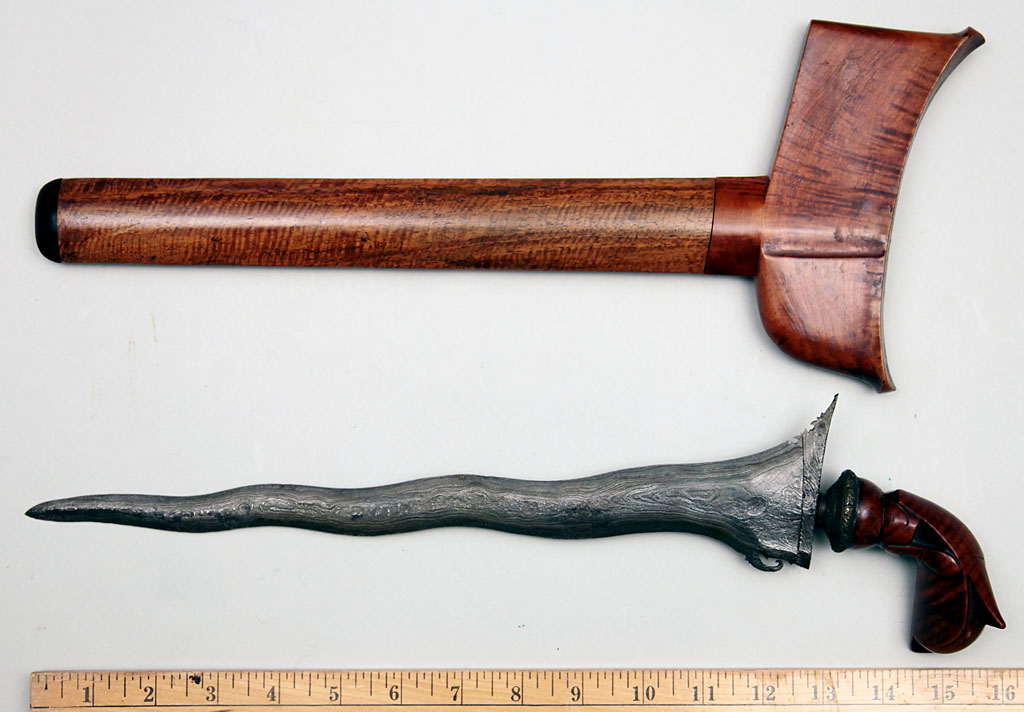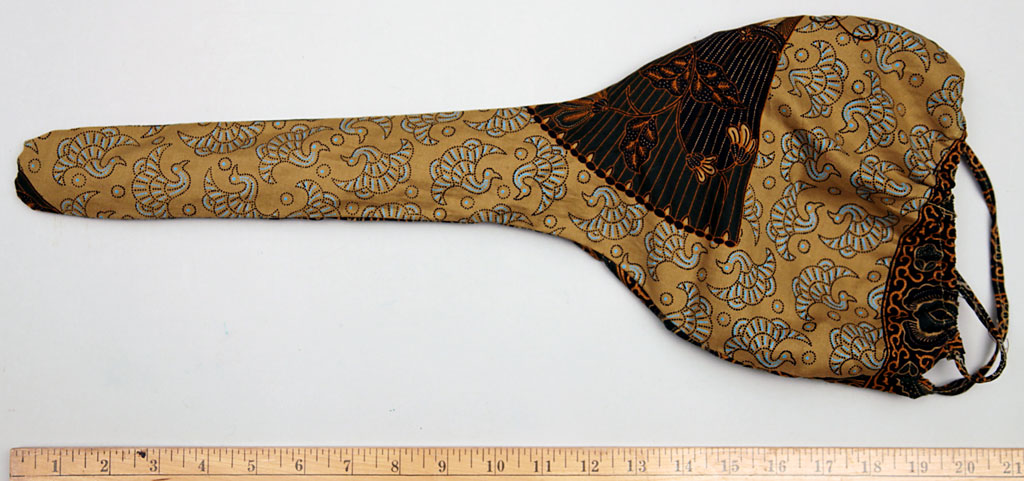
The gently wavy double edged blade measures just over 13 inches (33.5 cm) in length and has a relatively lenticular cross section and a tight, well defined pamor pattern. There is a dimple (indentation) on both sides of the blade. The blade surfaces are matte and dark gray with scattered darker patches with some slight pitting and a few small, bright rubbed areas. A well engraved brass or bronze pendokok or hilt ferrule sets off a very well carved wooden hilt. A small hollow defect with a narrow radiating crack may be seen along the back of the hilt and may represent old insect damage. The keris is 16.1 inches (41 cm) in length and weighs just under 12 ounces (339 grams). The well carved wooden scabbard has a slightly glossy surface with a few minor bruises to the finish on the shaft approaching the rounded dark wood tip. Within the scabbard, the overall length is 17¼ inches (44 cm) with a weight of 20 ounces (572 grams). Lew dated this example to the early 19th century. A storage bag is included with this keris.
Lew presented this keris on the forum in 2006.








